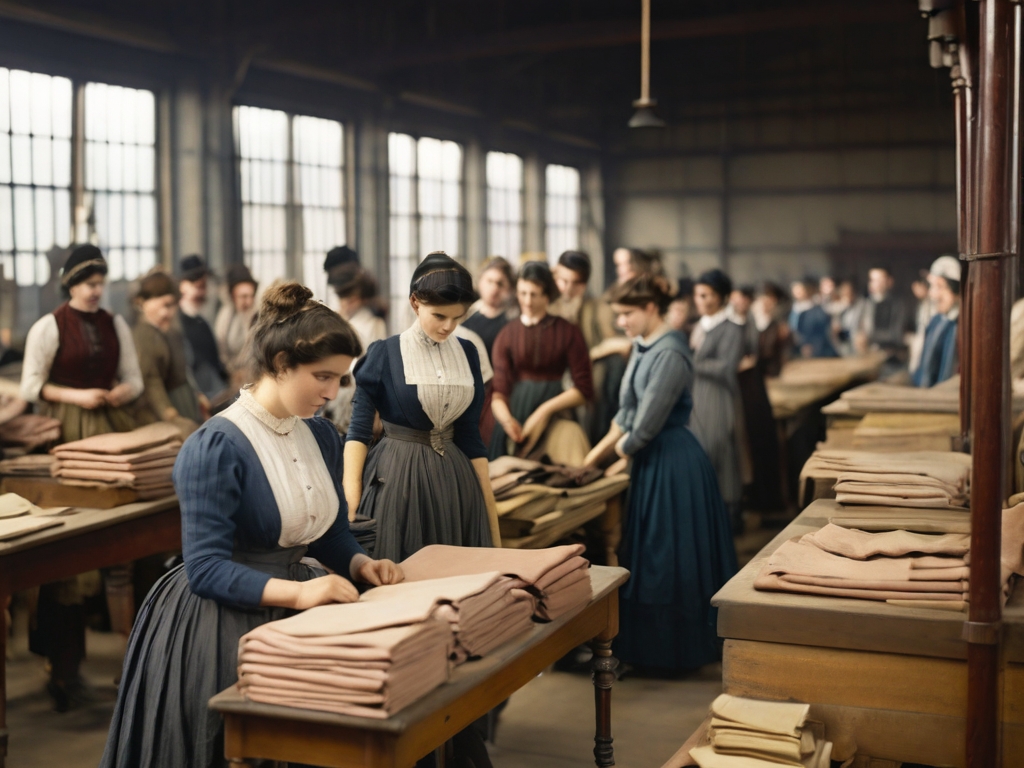
The accessibility of fashion has undergone a significant transformation over time, reflecting changes in technology, consumer behavior, and economic factors.
In the past, fashion was primarily accessible to the elite through exclusive couture houses. High-end designers created custom garments for wealthy clients, often requiring multiple fittings and commanding high prices. This exclusivity created a sense of luxury and status associated with designer fashion.

How did mass production and industrialization in the late 19th and early 20th centuries impact the accessibility of clothing for the middle class?
However, with the advent of mass production and industrialization in the late 19th and early 20th centuries, ready-to-wear clothing became more accessible to the middle class. Department stores and mail-order catalogs allowed consumers to purchase fashionable clothing at more affordable price points.
The rise of fast fashion in the late 20th century further democratized fashion by accelerating the production and distribution of trendy clothing at extremely low prices. Fast fashion retailers like Zara, H&M, and Forever 21 introduced rapid turnover of styles, making current fashion trends accessible to a wide audience. This model relied on quick production cycles, cheap labor, and global supply chains to offer affordable clothing that mimicked designer looks.
In recent years, the proliferation of online shopping platforms has revolutionized the way consumers access fashion. E-commerce has made it possible to browse, purchase, and receive clothing from anywhere with an internet connection, eliminating geographical barriers and expanding options for consumers. Online marketplaces, social media platforms, and influencer marketing have further democratized fashion by providing a platform for independent designers and small brands to reach a global audience.

Overall, the accessibility of fashion has evolved from exclusive couture to fast fashion and online shopping, reflecting changes in technology, production methods, and consumer demand. While increased accessibility has made fashion more inclusive and diverse, it has also raised concerns about sustainability, ethical production practices, and the environmental impact of fast fashion.

Find Your Perfect
ONLINE JOB
Watch the video below and we will find your perfect online job in less than 5 minutes.
What are the key factors contributing to the rise of fast fashion in the fashion industry?
The rise of fast fashion can be attributed to factors such as globalization, advances in technology, shortened production cycles, and consumer demand for affordable and trendy clothing.
What are the historical influences and societal changes that have shaped the evolution of fashion from 1900 to 2000?
The evolution of fashion from 1900 to 2000 was influenced by factors such as world wars, economic fluctuations, technological advancements, cultural movements, and shifts in societal norms and values.
How does fashion research contribute to our understanding of consumer behavior, industry trends, and design innovation?
Fashion research provides insights into consumer preferences, market trends, and emerging technologies, helping designers and businesses make informed decisions and adapt to changing market demands.
What is the significance of studying fashion history in understanding contemporary fashion trends and industry practices?
Studying fashion history provides valuable insights into the cultural, social, and economic contexts that shape contemporary fashion trends, industry practices, and consumer behavior.



